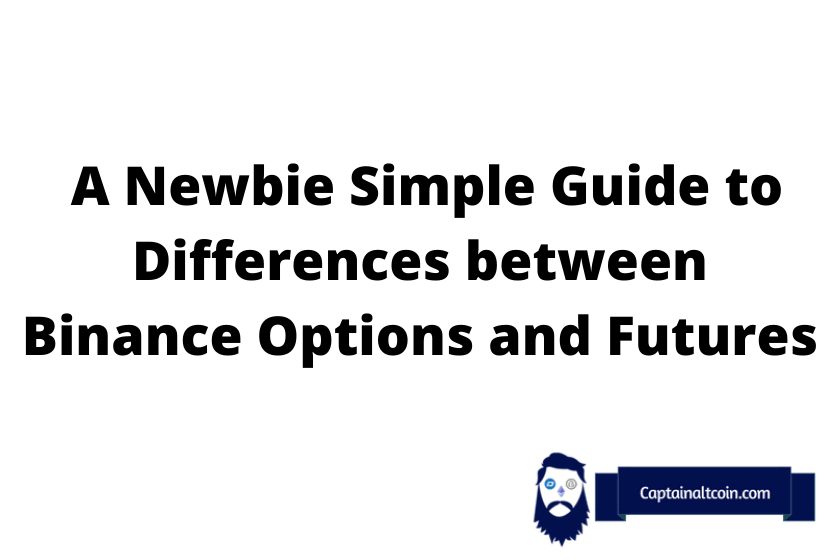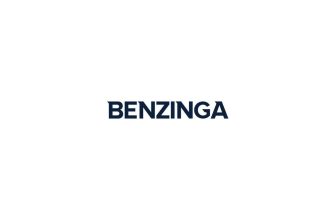
Binance is the world-leading exchange platform for trading different cryptocurrencies. In a seamless process, binance traders can buy cryptocurrencies. The platform enables the trading of options and futures. The exchange serves as a one-stop platform for crypto traders. Binance future traders engage in different types of trading including crypto to derivative, crypto to crypto, or fiat to crypto trading. In binance options, only American Options can be traded on the crypto exchange platform. Futures are also known as futures contracts, likewise, options are options contracts.
But what are options contracts?
We can start by understanding what a contract is in a normal traditional setup.
Simplifying a lot, the main difference is that in a futures contract both the long and the short have obligations, while in an options contract the short has an obligation and the long has a right (ie, a “choice”, a “possibility”).
For example, with a BTC futures contract, if I’m the buyer (long) and you’re the seller (short), when the contract expires I have the obligation to pay cash and you have the obligation to send me BTC.
With an option, specifically a call option, if I’m the buyer (or holder, or long) and you’re the seller (or writer, or short) at expiration I can choose if I’m gonna send you money and force you to send me BTC, or if I just want to ignore the contract and not do anything about it (and you’re released from your obligation). Similarly, if I buy a put from you, I have the right to decide whether I want to send BTC your way and force you to pay me the amount specified in the option contract, or I may simply decide to let the put expire and release you from your obligation to take delivery.
What you'll learn 👉
What is a contract?
A contract is a legal agreement enforceable by law, spoken or written between at least two parties. It has a binding nature with a set of rules and consequences for either breaching or abiding by the promises.
So, what are options contracts?
An options contract is an agreement between two parties (seller and a buyer) that gives the right, but not the obligation for the sale or purchase of some underlying asset at a known price on or before the expiry date.

How do Options contracts work?
Options contracts that give you the right to buy an underlying asset is called options contracts.
Let’s use an example to ease things up.
Jux is a car owner. His colleague Zak does not mind owning that car, he requests Jux to give him the right to buy the car at a specific price of $30,000 anytime in six months period. Zak has the option to buy the car at $30,000 anytime during the six months. Jux will not be able to sell the car to anyone else apart from Zak during this period.
Jux agrees on the condition that Zak pays him 5% of the value of the car. This is the price of the option Zak pays. It’s call premium. The value of the car (underlying asset) determines the premium price paid. The buyer will pay the premium. Jux becomes the writer of the option and Zak is the holder of the option. Zak pays Jux premium to write the options contract.
Zak doesn’t have to buy the car, although he has the right to buy it anytime during the six months. So, Zak has the right but not the obligation to buy the car. After the predetermined six-month timeframe the option expires and has no value. If Zak doesn’t buy his losses will be limited to the premium paid.
Zak can buy the car by exercising the options contract during the six months. If the value of the car has now risen and Jux doesn’t want to sell. Jux is obliged to if Zak requests. Nothing will prevent Zak from buying the car. All he has to do is exercise the contract and buy the car at the predetermined price called the strike price. This is an example of a call options contract that gives Zak the right to buy the underlying asset.
Conversely, an options contract that gives you the right to sell an underlying asset is put options contract. If you want to sell an underlying asset, you’ll pay the buyer of the underlying asset — the contract writer to write an options contract. As the seller of the underlying asset, you become the contract buyer. You own the contract. You’ll have the right to exercise the contract or let it expire.
Options that can be exercised anytime within the option’s predetermined duration are called American options. Binance crypto exchange platform allows trading of American options. Options that can be exercised only at the end of the duration of a predetermined time frame are called European options.
Why are American options important?
American options are supported and can be traded on binance exchange. Binance options are American-style options where users can exercise the contract any time before the expiration date. Binance options offer short-duration contracts ranging from ten minutes to one day. Users can trade with expiry windows as short as ten minutes. Traders here can only buy binance options as binance is the only issuer of the product. Binance options provide a wider spectrum of trading strategies that are not normally in traditional options. Also, traders are exposed to the unlimited downside.
Options contracts are derivatives since they derive from an underlying asset such as stocks, bonds, cryptocurrencies, or commodities like oil. If a security’s value is determined by an underlying asset on which it’s based then it’s a derivative. Changes in the price of the underlying asset in the markets move along with their specific derivatives. Each derivative has its power and feebleness. Derivatives are essential in helping traders hedge risks. Commonly traded derivatives are forwards, swaps, options, and futures. In this article, we will delve into options and futures.
What are futures contracts?
A Futures contract is a legally binding agreement to buy or sell a standardized asset at a future date or during a specific time with a predetermined price called forward price.
Take an example of a baker, with a small bakery shop that specializes in bread. The baker sells each loaf at $10. Assuming flour is the only ingredient used which costs $6 per loaf; the total gross profit will be $4.
The cost of flour will be key in maintaining this profit margin. He is worried about future hikes in flour prices. As a wise business person, he decides to reach out to a flour producer company and enter into a supply agreement. Enabling him to buy flour from the producer for the same price the whole year. Now he will spend less time worrying about fluctuating flour prices and spent more time marketing his business.
This is an example of how futures contracts work.
How does a futures contract work?
The baker goes long on the contract — agrees to buy a standardized asset and pay the forward price. The baker has used a futures contract to hedge his investment. It reduces risk and guarantees his loaves will be profitable. The flour producer here is the company that goes short the contract agreeing to sell flour at a forward price.
If the prices of the flour go low in the local markets, the baker loses money. He will still have to buy flour at an agreed price of $6. On the contrary, the flour producer will be happy, that’s why they entered into the futures contract to sell flour at good rates. They will sell their flour at above-market prices. If the prices of flour go high, that’s exactly why the baker entered the futures contract. His contract will enable him shields his profits. Futures markets serve as a risk management tool, ensuring steady profits by focusing on a balance.
When someone enters a futures contract they are obligated to carry out the transaction for the underlying asset in the future at the delivery date, regardless of losses or profits incurred. Futures obligate the holder to buy or sell the asset when they expire.
Futures contracts originated as a way companies hedge costs. Today they are widely used by speculators to gain exposure to financial assets like gold or even bitcoin. Futures lets investors protect themselves from volatility in the market letting them hedge their bets against an underlying asset.
Futures transactions are facilitated through a features exchange. Futures contracts are standardized to facilitate easy trading on a futures exchange. The exchange eliminates counter-party risks, thus guarantees that the contract will be honored. When a futures contract is bought or sold, the exchange becomes the buyer to every seller and the seller to every buyer. Consequently, the exchange provides anonymity to futures market participants. Participants can enter and exit the market with ease, making the futures market highly liquid and optimal for price discovery.
Read also:
- Binance NFT Marketplace Review – Create & Trade NFTs on Binance
- Binance Staking Review – How to Stake Coins on Binance?
- Binance Earn Review – How Do Binance Fixed & Flexible Savings Work?
- How to Trade Binance Options | Binance Option Review
- Binance Tax Calculators – 3 Steps to Calculate Binance Taxes
- Best Wallets for Binance Coin (BNB) – Beginner’s Guide
- Binance Crypto Debit Card Review – When Do We Get It?
- Binance Alternatives & Competitors
Why futures are better than options?
The main fundamental difference between options and futures lies in the obligation they put on a seller or buyer of their contracts. An option gives options. And, of course, one of remarkable advantage of options. Options give the contract buyer or seller, the right to buy or sell a certain asset at a specific price any time during the life of the contract, but not the obligation.
Many traders are drawn to futures because of leverage. Traders commit a small amount to control a large asset.
1. Great for trading specific investments
Futures can be impeccable in trading certain financial instruments in the markets like the index, commodities like oil, or cryptocurrencies through binance futures exchange. Futures involves the use of leverage — something that amplifies how you can gain or lose from your investment. Futures leverage is made possible by trading a margin. Margin is the value of funds required to trade futures position. This amount is mostly a fraction of the contract’s total value, the deposit paid is called the initial margin management. Smaller changes in the trade can result in larger gains or losses thereby making futures traders strategically understand their risks and possible gains. Risk tolerant investors access the markets and trade.
Futures offer a pretty convenient method for getting exposure to commodities. Futures only involves a fraction of the contract value to be invested by the speculator. Speculators use forward prices as an indicator of consensus estimates. You can visualize these patterns with a future curve.
2. Fixed upfront trading costs
Futures contract investors know how much margin to put up in the contract (stable margin requirements). The margin requirement of assets usually remains unchanged for a whole year.
Conversely options premium price is rapidly affected by the volatility of the underlying asset.
3. No time decay
Futures investors can go long or short. There is no time decay in overall asset value.
On the other hand, as time passes on options time value will decay. An options time value is always decaying, as you get closer to expiration, time decay would rapidly speed up exponentially.
4. Future markets are very liquid
Liquidity is the collective expression of investors’ opinions on the market. The more opinions that are expressed in the market the more liquid the market is. These opinions are represented in a futures market either as an existing position by traders known in futures as open interests. Opinions are also expressed as buy or sell orders, which get to be executed thereby communicated to the rest of the market. The size and price of these orders may vary considerably.
Why is liquidity an important element of the market opportunity?
The more traders there are, the more expressions of opinions are conveyed on the market. The likelihood a trader will encounter another trader with an opposing view. Traders with opposing views agree on quantity and price to trade. The two contracts will effectively cancel each other. The reason is possible for a futures contract to be netted out is that the contracts are fairly standardized and trade on an exchange. Meaning it fairly easy to find long and short positions for the contract.
Options are illiquid. A larger bid-ask spread on the contract means, there are not enough buyers to generate enough interest for those wanting to sell on the same contract.
5. Futures pricing is easy to understand
Learning the futures pricing formula helps to understand futures quotes and plan your bets in a better way. The cost-of-carry pricing model is easier to understand.
Options pricing are a bit hard to understand. They are mathematical models that give theoretical or a fair value of the option. For instance, Black-Scholes Model is technically hard for most investors to comprehend. Even more advanced methods still estimate the option price and, are based on assumptions about the future.
Final word
Options are much more versatile and complex than futures. Both options and futures help investors hedge. Although options are less risky compared to futures, futures markets tend to move faster than options markets. Futures have some advantages over options: opens markets to investors, stable margin requirements, no time decay involved, high liquidity, and simple pricing.








